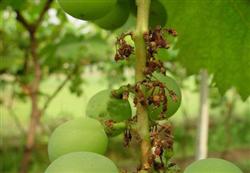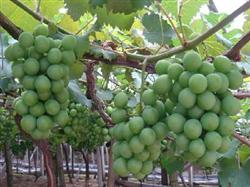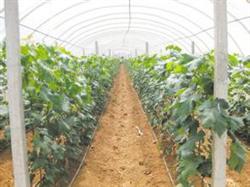Methods of controlling Brown Blight of Grape ear Axis

Grape common diseases are: grape cob brown blight, gray mold, powdery mildew, anthracnose, black pox, white rot, sunburn and other diseases, for everyone to introduce grape cob brown blight is how to control: grape cob brown blight mainly harm young flower buds, cobs or young fruits, so that they shrink, dry, resulting in a large number of flowers and fruit drop. Generally, the yield is reduced by 10%-30%, and in severe cases, the yield is reduced by more than 40%. According to Wu Weimin, an expert on fruit tree research at the Horticulture Institute of the Provincial Academy of Agricultural Sciences, high humidity is the main reason for the epidemic of grape cob brown blight. Low temperature and rainy weather from early May to early June is conducive to infection of the disease, and low temperature and rainy weather at flowering stage is conducive to the occurrence and spread of the disease. The disease was more serious in the vineyards with low-lying terrain, excessive watering, poor ventilation and light transmission, extensive field management, insufficient fertility and weak tree vigor. Kyoho is susceptible to the disease, new rose, longan, rose dew and other varieties are more resistant. When the fruit grows to soybean size, the disease stops infecting. The following measures can be taken to prevent grape cob brown blight. One is to clear the garden in time. Remove diseased branches and fruits, destroy them in a centralized way, and reduce overwintering bacteria sources. Second, wipe bud whole shoot. Timely wipe bud, pick core, prune fruit branch, improve ventilation and light transmission conditions. Third, rational fertilization. Increase organic fertilizer and phosphorus and potassium fertilizer, control nitrogen fertilizer, enhance plant disease resistance. Fourth, clean up the ditch system. Open up a set of ditch system to reduce the humidity in rainy days. Fifth, pesticide control. After grape bud sprouted, the stone-sulfur mixture was sprayed on the fruiting mother branch to eliminate overwintering bacteria. After the grape leaves are fully unfolded, 25.5% iprolon is selected for foliar spraying diluted 800-1000 times solution, or 40% pyrimethanil is selected for foliar spraying diluted 800-1500 times solution, and the dosage per mu is 60-100 ml, or 40% pyrimethanil is selected for foliar spraying diluted 800-1500 times solution, and the dosage per mu is 60-100 ml.
- Prev

Scientific use of grape ripening agent ethephon
1. Pay attention to watering the easily cracked fruit varieties so that the soil will not be dry before the fruit expands, so that the pericarp will not age, and the cracking will be reduced when the soil moisture is too much in the rainy season. 2, it is recommended to bag the grape when there are conditions. The bagged grape pericarp is fresh and tender and flexible, and it is not easy to crack the fruit when it expands quickly in the event of rain.
- Next

Pesticide control methods for common diseases of grape in greenhouse
Pesticide control measures for all kinds of diseases of grape in greenhouse: prevention and control of grape downy mildew: clean the orchard, spray 5 Baomedu stone sulfur mixture before sprouting, spray once every half a month from the young fruit stage, and spray 40% Trichoderma 800 / 1000 times when you get sick. Prevention and control of grape white rot: clean the orchard, every from June.
Related
- Moge, come on! The staff of the peasant association in the producing area of cantaloupe were frightened when the crowd gathered.
- Causes and Solutions of low Fruit setting rate of Apple
- Symptoms and control measures of passion fruit virus disease
- Fruit growing lesson: how do apple orchards keep high yields?
- Can you build orchards in the mountains? What are the pros and cons?
- How to manage the coloring period of Crisson grape?
- This paper introduces the processing technology of two kinds of fig products.
- How much is a month for retired teachers in rural areas by 2020?
- How can strawberry planting increase sugar content? We should pay attention to management in many aspects.
- What are the cultivation techniques on how to improve the yield of golden fruit?

